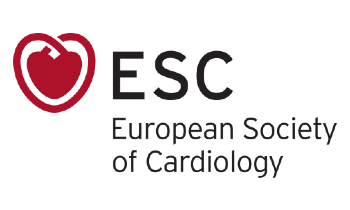2009 ESC/ERS Guidelines for the Diagnosis and Treatment of Pulmonary Hypertension
Published 27 August 2009
European Heart Journal 2009;30(29):2493-2537

The Guidelines on the diagnosis and treatment of pulmonary hypertension (PH) are intended to provide the medical community with updated theoretical and practical information on the management of patients with PH. As multiple medical specialties are involved with this topic and different levels of insight may be needed by diverse physicians, these Guidelines should be considered as a compromise between heterogeneous requirements. The new features of this Guidelines document are:
A joint Task Force of the ESC and of the ERS has developed these Guidelines. In addition, members of the International Society for Heart and Lung Transplantation and of the Association for European Paediatric Cardiology have been included.
PH is a haemodynamic and pathophysiological state that can be found in multiple clinical conditions. These have been classified into six clinical groups with specific characteristics. To highlight the remarkable differences between these clinical groups, a comparative description of pathology, pathobiology, genetics, epidemiology, and risk factors is detailed in the first part. More practical information related to clinical presentation, diagnostic features, and treatment are described in the second part for each individual group.
As the diagnostic strategy in patients with suspected PH is of utmost importance, a new diagnostic algorithm has been provided in the section dedicated to pulmonary arterial hypertension (PAH, group 1). In this case the diagnosis requires the exclusion of all other groups of PH.
PAH represents the condition described more extensively due to the availability of specific treatments. Based on the publication of recent randomized controlled trials (RCTs) a new treatment algorithm with updated levels of evidence and grades of recommendation and the current approval status in different geographic areas have been provided. Definitions for the evaluation of a patient's severity, treatment goals, and follow-up strategy have been also included. The specific characteristics of the different types of PAH including paediatric PAH have been highlighted.
The other four main clinical groups of PH, i.e. pulmonary veno-occlusive disease (PVOD, group 1′), PH due to left heart disease (group 2), PH due to lung diseases (group 3), and chronic thromboembolic pulmonary hypertension (CTEPH, group 4 ) have been discussed individually while the heterogeneity and rarity of the conditions included in group 5 prevent an appropriate description in these guidelines.

The ISHLT endorsed the document in 2009.
Read at EHJRelated Guidlines
-
Consensus Statements from the ISHLT Consensus Conference: Heart Failure Related Cardiogenic Shock
-
Utilization of Hepatitis C Virus–Infected Organ Donors in Cardiothoracic Transplantation
-
ISHLT Consensus Statement on Donor Organ Acceptability and Management in Pediatric Heart Transplantation
-
Diagnosis and Management of Bronchiolitis Obliterans Syndrome
-
ISHLT Working Formulation of a Standardized Nomenclature for Cardiac Allograft Vasculopathy—2010

